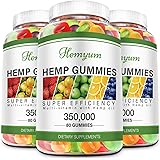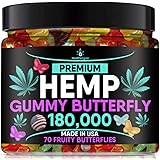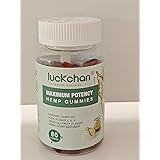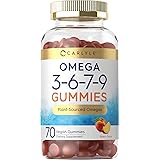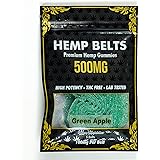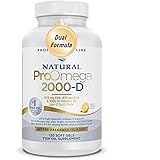Navigating chronic anxiety can be an incredibly debilitating experience, impacting every facet of life. For individuals seeking natural pathways to relief, exploring options like CBD oil for anxiety has become a topic of significant interest. The accompanying video shares a personal, year-long journey with CBD oil, highlighting its potential role in managing anxious states by influencing the body’s stress response.
This comprehensive guide expands upon the insights shared, delving deeper into the science behind CBD, its practical application, and how it integrates into a broader strategy for natural anxiety reduction. Understanding how to shift your body from a constant state of “fight or flight” to one of “rest and restore” is crucial for long-term well-being.
Understanding Anxiety’s Biological Roots: Sympathetic vs. Parasympathetic States
Our bodies are equipped with an intricate autonomic nervous system that governs involuntary functions. This system comprises two primary branches: the sympathetic nervous system and the parasympathetic nervous system. Understanding their roles is fundamental to comprehending how anxiety manifests and how interventions like CBD oil can offer support.
1. **The Sympathetic Nervous System: Your Fight-or-Flight Response**
Often referred to as the “fight or flight” system, the sympathetic nervous system activates when the body perceives a threat or stressor. This response is designed for short-term survival, redirecting resources to essential functions for immediate action. Physiologically, this means increased heart rate, heightened alertness, dilated pupils, and a surge of adrenaline. Crucially, blood flow is diverted away from non-essential systems like digestion and reproductive organs and instead channeled to muscles and the brain. While beneficial in acute danger, persistent activation due to chronic stress can be detrimental. This sustained “on” mode often results in feelings of unease, heightened reactivity, and the physical symptoms associated with anxiety.
2. **The Parasympathetic Nervous System: Rest, Restore, and Digest**
In contrast, the parasympathetic nervous system is responsible for the “rest and restore” functions. It promotes calm, relaxation, and overall bodily maintenance. When this system is active, heart rate slows, digestion improves, and energy is conserved. Shifting into a parasympathetic state allows the body to heal, regenerate, and process information without the urgency of a perceived threat. Optimal health and a reduced experience of anxiety depend on maintaining a healthy balance between these two systems, ensuring the body spends adequate time in its restorative mode.
The Modern World and Chronic Sympathetic Overdrive
Many individuals today find themselves perpetually stuck in a sympathetic state, often without realizing it. The speaker in the video rightly points out that stressors aren’t always just emotional; physical and chemical factors play a significant role. Consider these common culprits:
- **Sleep Deprivation:** Insufficient or poor-quality sleep signals to the body that it’s not safe to fully relax, maintaining a low-grade sympathetic activation.
- **Dietary Choices:** Consuming highly processed foods, excessive sugar, or insufficient nutrients can create inflammatory responses and metabolic stress. This internal stress continuously signals the body to remain vigilant.
- **Over-Exercise:** While beneficial, excessive or high-intensity exercise without adequate recovery can overtax the body, keeping it in a stressed state rather than promoting recovery.
- **Environmental Toxins:** Exposure to pollutants, chemicals in cleaning products, or even certain personal care items can introduce chemical stressors that activate the sympathetic response.
- **Constant Stimulation:** The incessant demands of digital devices, news cycles, and always-on work cultures prevent the mind and body from truly disengaging and relaxing.
These factors contribute to a “perfect storm” that pushes the body into chronic fight-or-flight, manifesting as persistent anxiety, digestive issues, and even reproductive challenges, as blood flow is consistently diverted from these vital systems.
How CBD Oil May Support a Shift to Parasympathetic Calm
Cannabidiol, or CBD, is a compound found in the cannabis plant that has gained considerable attention for its therapeutic potential, particularly in managing anxiety. Unlike THC, CBD is non-psychoactive, meaning it does not produce the “high” associated with marijuana. The speaker’s year-long experience underscores its ability to modulate the body’s response to stress without dulling mental sharpness.
1. **Interacting with the Endocannabinoid System**
CBD primarily works by interacting with the body’s endocannabinoid system (ECS), a complex cell-signaling system. The ECS plays a crucial role in regulating a wide range of functions, including mood, sleep, appetite, memory, and stress response. When the ECS is balanced, the body can better adapt to stressors and maintain homeostasis. CBD is thought to enhance the body’s natural endocannabinoids and influence receptors, promoting a more balanced state.
2. **Modulating the Stress Response**
By interacting with the ECS, CBD may help to temper the overactivity of the sympathetic nervous system. It doesn’t act like a sedative but rather supports the body’s inherent ability to manage stress more effectively. The speaker’s personal account illustrates this perfectly: rather than eliminating the stressor, CBD helped her body “handle that stress a lot better,” preventing the intense freak-out response. This moderation allows for a smoother transition towards a parasympathetic state, fostering a sense of calm and improved resilience.
3. **Potential Benefits for GI and Fertility Health**
When the body is constantly in fight-or-flight, blood flow is diverted from the GI tract and reproductive organs. This can lead to digestive discomforts like bloating, as mentioned in the video, and potentially impact fertility. By helping to shift the body into a parasympathetic “rest and restore” mode, CBD could indirectly support these systems. Increased blood flow means better nutrient delivery and overall function for digestion and reproductive health, offering a plausible, albeit speculative, link for those struggling with such issues.
Navigating the Booming CBD Market: Choosing Reputable Products
The CBD industry has indeed experienced explosive growth, transforming from a “billion dollar industry” to a projected “$25 billion dollar industry by 2022,” as highlighted in the video. This rapid expansion, while indicating widespread interest, also means the market can be saturated with varying quality products. Ensuring you select a reputable source is paramount for safety and efficacy.
1. **Key Factors for Vetting CBD Products**
When considering CBD oil for anxiety, due diligence is essential. Look for brands that prioritize transparency and quality:
- **Third-Party Lab Testing (COAs):** Reputable companies provide a Certificate of Analysis (COA) from an independent third-party laboratory. This document confirms the CBD content, verifies the absence of THC (if advertised as THC-free), and screens for contaminants like heavy metals, pesticides, and mold.
- **Source of Hemp:** Understand where the hemp is grown. High-quality CBD comes from organically grown hemp, preferably from farms in the U.S. or E.U. that adhere to strict agricultural standards.
- **Extraction Method:** CO2 extraction is generally considered the safest and most efficient method, producing a clean and pure CBD extract without harsh chemical residues.
- **Type of CBD:**
- **Full-Spectrum:** Contains all cannabinoids, terpenes, and flavonoids naturally found in the hemp plant, including trace amounts of THC (less than 0.3%). This offers the “entourage effect,” where compounds work synergistically.
- **Broad-Spectrum:** Contains a range of cannabinoids and terpenes but typically has undetectable levels of THC.
- **CBD Isolate:** Pure CBD, with all other plant compounds removed. While THC-free, it lacks the entourage effect.
- **Ingredients List:** Check for natural, high-quality carrier oils (like MCT oil) and avoid products with artificial flavors, colors, or unnecessary additives.
2. **Dispelling Misconceptions: No “High” from Hemp-Derived CBD**
A common concern for many exploring CBD is the fear of psychoactive effects. As the video confirms, hemp-derived CBD oil, particularly those with less than 0.3% THC or broad-spectrum/isolate products, will not get you high. The psychoactive component of cannabis is THC, which is present in very minimal amounts in legal hemp products. This distinction is critical for those seeking therapeutic benefits without impairment.
A Personal Journey with CBD Oil: Dosage and Integration
The speaker’s honest account of her journey with CBD oil provides valuable real-world context. Her initial approach, using a higher dosage during a period of intense anxiety, and her subsequent reduction to a maintenance dose, highlights the adaptive nature of CBD use.
1. **Initial Dosage and Adjustments**
During her most challenging period, characterized by a stressful work environment, sleep deprivation, and over-exercising, the speaker initially used “four pumps in the morning and either two or three pumps at night,” sometimes even mid-day. This higher initial dosage was crucial for providing significant support to shift her severely activated sympathetic state. This demonstrates that starting with a slightly higher dose might be necessary for some individuals experiencing acute anxiety, especially when paired with other significant life stressors. It’s important to remember that individual responses to CBD can vary greatly based on body weight, metabolism, and the severity of symptoms.
2. **Transition to Maintenance and Daily Use**
As the speaker implemented other lifestyle changes (like reducing intense exercise and improving overall happiness), her anxiety levels naturally decreased. Consequently, her CBD usage reduced to “two pumps at night.” This illustrates an important principle: CBD should not be viewed as a crutch or a standalone cure, but rather a supportive tool that can be adjusted as your overall well-being improves. Furthermore, the video emphasizes the importance of daily usage for cumulative benefits, akin to a supplement rather than an immediate-effect medication. Consistent use allows the ECS to maintain a more balanced state over time.
Beyond CBD: Embracing a Holistic Approach to Anxiety Healing
A central theme emphasized in the video is that CBD oil is not a “cure-all.” True and lasting anxiety reduction requires a multi-faceted, holistic approach. The speaker’s journey is a testament to this, as she implemented various strategies alongside CBD to heal her anxiety comprehensively. Consider integrating these additional pillars of wellness:
1. **Mindful Movement and Exercise Rebalancing**
While exercise is vital, the *type* and *intensity* matter significantly for anxiety. The speaker’s transition from intense running to walking is a prime example. High-intensity workouts can sometimes elevate cortisol, the stress hormone, keeping the body in a sympathetic state. Incorporating gentler forms of movement, such as walking, yoga, tai chi, or swimming, can promote parasympathetic activation. These activities reduce physical tension, improve blood flow, and release endorphins, all contributing to a calmer state of mind.
2. **Optimizing Nutrition for Gut-Brain Health**
The gut-brain axis is a powerful connection, and gut health profoundly impacts mental well-being. A diet rich in whole, unprocessed foods, lean proteins, healthy fats, and fermented foods supports a healthy microbiome. Conversely, excessive sugar, refined carbohydrates, and inflammatory foods can disrupt gut balance and exacerbate anxiety. Focusing on nutrient-dense foods provides the building blocks for neurotransmitter production and helps reduce systemic inflammation, promoting overall calm.
3. **Prioritizing Restorative Sleep**
Sleep is non-negotiable for anxiety management. Chronic sleep deprivation elevates stress hormones and impairs cognitive function, making individuals more susceptible to anxiety. Establishing a consistent sleep schedule, creating a relaxing bedtime routine, and optimizing your sleep environment are crucial steps. This means reducing screen time before bed, ensuring your bedroom is dark and cool, and avoiding stimulants like caffeine and alcohol in the evening.
4. **Implementing Stress Reduction Techniques**
Actively engaging in stress-reducing practices helps train your nervous system to spend more time in the parasympathetic state. Techniques such as mindfulness meditation, deep breathing exercises, spending time in nature, and connecting with loved ones are incredibly powerful. Even short, daily practices can accumulate significant benefits, helping to reframe your response to everyday stressors. These practices provide tools to consciously disengage from anxious thought patterns and bring the body back to a state of calm.
5. **Addressing Environmental and Chemical Stressors**
Reducing exposure to environmental toxins is another critical, yet often overlooked, component. This can involve using natural cleaning products, filtering tap water, choosing organic foods to minimize pesticide intake, and ensuring good air quality in your home. Minimizing these external stressors reduces the overall burden on your body, allowing it to function more optimally and move out of a constant state of defense.
Integrating these strategies creates a synergistic effect, where each component supports and enhances the others, including the beneficial impact of CBD oil for anxiety. This comprehensive approach addresses the root causes of anxiety, fostering sustainable healing and long-term well-being.


